2K Injection Molding Service
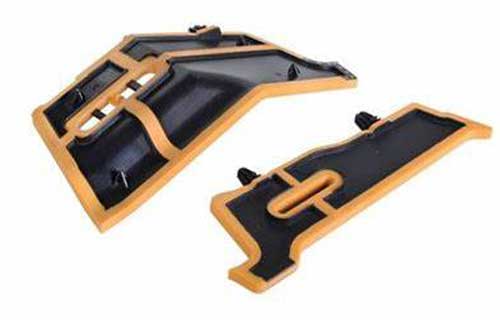
What is 2K Injection Molding?
2K injection molding, also known as Two-Shot Injection Molding or Double-Color Injection Molding or Multi-Component Injection Molding. At Yigu Technology, we take pride in offering top - notch 2K Injection Molding Service. Our state - of - the - art facilities and highly skilled professionals ensure that every project is executed with precision and excellence.
The 2K injection molding process allows for the combination of two different materials or colors in a single mold, creating products with enhanced functionality, aesthetics, and durability. Whether you need complex multi - material components for the automotive industry, stylish dual - colored consumer products, or any other custom - made items, Yigu Technology is your reliable partner. We focus on delivering high - quality results, meeting tight deadlines, and providing excellent customer service to exceed your expectations. Choose Yigu Technology for your 2K Injection Molding needs, and let us bring your innovative ideas to life with our advanced technology and expertise.
How Does Two-Shot Injection Molding Work?
Look no further than Yigu Technology’s Two - Shot Injection Molding Service! This innovative technique transforms manufacturing by combining two distinct materials or colors into one cohesive piece, all within the same mold. Imagine a sleek, dual - colored smartphone case or a durable, multi - material automotive component – all crafted with unparalleled precision and efficiency. How does it work? First, the base material is injected into a meticulously designed mold. Then, without removing the part, a second material is injected, perfectly aligning with the first. The result is a single, integrated product that offers enhanced durability, reduced assembly time, and endless design possibilities. With Yigu Technology, you’re not just creating products; you’re shaping the future of innovation!
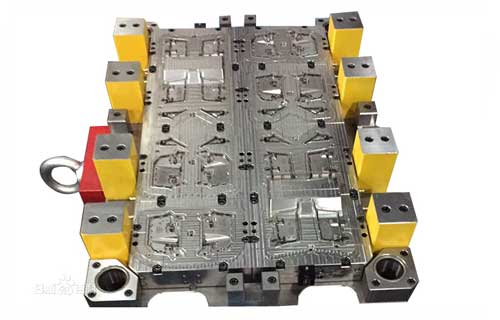
Design, Two-Shot Injection Mold making, production and assembly
What exactly can we do
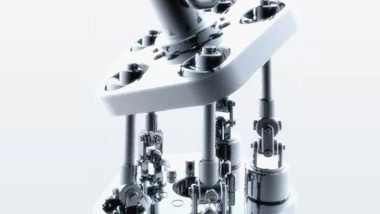
mould design
>Provide samples, drawings and requirements, and provide drawing optimization and design support and efficiency
>Good at optimizing injection mold structure and providing high-efficiency mold development services
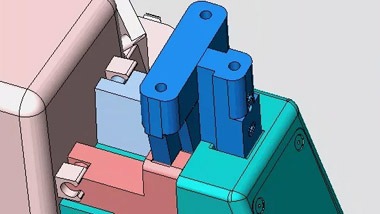
Mold making
>According to the requirements of product structure and product performance, reasonably design the mold structure and cooperate with 3D software for mold flow analysis
>Use 3D laser plate printing to make your samples meet the requirements at one time
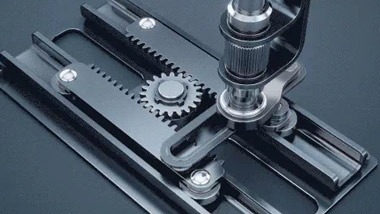
Product production
>With a complete production management team and equipment, it can deliver on time and quickly as soon as one week
>Batch production after sample determination

Product assembly
>Incoming inspection - material preparation - assembly Online - assembly - finished product inspection - shipment
Applications of Double-Color Injection Molding
Double-color injection molding is more than just a manufacturing process—it’s a gateway to endless creativity and enhanced functionality. This innovative technique seamlessly integrates two distinct colors or materials into a single product, creating visually striking and highly functional items. Whether you’re aiming for aesthetic appeal or improved performance, double-color injection molding has you covered. Let’s explore some of the incredible applications that make this process a game - changer across industries.
Key Applications Across Industries
- Consumer Electronics
Imagine sleek smartphones with dual - colored casings, or stylish headphones with contrasting accents. Double - color injection molding allows for the creation of visually appealing and durable electronic components that stand out in the market. - Automotive Industry
From ergonomic grips on steering wheels to multi - colored dashboard components, this process enhances both the aesthetics and functionality of automotive parts. It also reduces assembly time and improves durability. - Medical Devices
In the medical field, double - color injection molding can be used to create ergonomic handles for surgical instruments or color - coded components for easy identification. This ensures both precision and reliability in critical applications. - Consumer Goods
Think of vibrant, dual - colored toys, ergonomic kitchen utensils with soft - touch grips, or stylish home decor items. Double - color injection molding brings a touch of elegance and practicality to everyday products. - Sports Equipment
Sports enthusiasts will appreciate the enhanced grip and visual appeal of double - colored handles on fitness equipment, tennis rackets, or golf clubs. This process not only improves functionality but also adds a touch of style.
Advantages of Multi-Component Injection Molding
Multi - component injection molding is a game - changing manufacturing technique that seamlessly integrates multiple materials or colors into a single, cohesive product. This advanced process not only enhances functionality but also boosts efficiency and reduces costs. Let’s dive into the key advantages that make multi - component injection molding an essential choice for modern manufacturing.
Key Advantages of Multi - Component Injection Molding
- Enhanced Functionality
Combine different materials to create products with superior performance, durability, and flexibility. Each component can be tailored to meet specific requirements, ensuring optimal functionality. - Aesthetic Appeal
Achieve stunning visual effects with dual - or multi - colored designs. Multi - component molding allows for intricate patterns and contrasting colors, making your products stand out in the market. - Reduced Assembly Time
By integrating multiple parts into a single mold, assembly time and labor costs are significantly reduced. This streamlines the production process and accelerates time - to - market. - Improved Precision and Quality
State - of - the - art technology ensures that each component is precisely aligned and integrated. This results in higher - quality products with fewer defects and better overall performance. - Cost - Effective Solutions
Multi - component injection molding reduces material waste and eliminates the need for secondary assembly processes. This translates to significant cost savings without compromising on quality.
Why Choose Yigu Technology for 2K Injection Molding?
At Yigu Technology, we specialize in delivering top - notch 2K injection molding solutions. Our state - of - the - art facilities and expert team ensure that every project is executed with precision, efficiency, and innovation. Whether you need complex industrial components or visually stunning consumer products, we have the expertise to bring your vision to life.
- Advanced Technology: State - of - the - art equipment for precision molding.
- Expertise: Highly skilled professionals with extensive experience.
- Custom Solutions: Tailored services to meet your unique design and functional needs.
- Quality Assurance: Rigorous testing and quality control to ensure excellence.
- Efficiency: Streamlined processes for reduced lead times and cost - effective solutions.
- Innovation: Cutting - edge techniques to bring your boldest ideas to life.
Double Color Injection Molding FAQ
How is 2K Injection Molding different from Double-Color Injection Molding?
2K injection molding and double-color injection molding refer to the same process. The term "2K" stands for "two-shot," while "double-color" emphasizes the use of two different colors. Both terms describe the same advanced molding technique.
Can 2K Injection Molding be used for both functional and aesthetic purposes?
Yes, 2K injection molding is versatile and can be used to enhance both the functionality and visual appeal of products. It allows for the integration of different materials and colors in a single part.
What types of materials can be used in 2K Injection Molding?
A wide range of materials can be used, including thermoplastics, elastomers, and engineering resins. The choice of materials depends on the specific requirements of the product.
Is 2K Injection Molding suitable for high - volume production?
Yes, 2K injection molding is highly efficient and suitable for high - volume production. It reduces assembly time and labor costs, making it cost - effective for large - scale manufacturing.
How does 2K Injection Molding reduce production costs?
By integrating multiple components into a single mold, 2K injection molding reduces the need for secondary assembly processes. This leads to significant cost savings in labor and material waste.
Can 2K Injection Molding be customized for specific applications?
Absolutely! 2K injection molding is highly customizable. It can be tailored to meet specific design requirements, material properties, and functional needs for various industries.
How long does the 2K Injection Molding process take compared to traditional molding?
The 2K injection molding process is generally faster than traditional molding methods because it combines multiple steps into a single process. This reduces overall production time and accelerates time - to - market.
What is the minimum order quantity for 2K Injection Molding?
The minimum order quantity can vary depending on the complexity of the design and the specific requirements of the project. Contact Yigu Technology for a detailed quote based on your needs.
Can 2K Injection Molding produce complex geometries?
Yes, 2K injection molding is capable of producing complex geometries and intricate designs. The precision of the process allows for the creation of high - quality, multi - material components.
How does 2K Injection Molding ensure quality control?
Yigu Technology employs rigorous quality control measures, including state - of - the - art equipment and strict testing protocols, to ensure that every product meets the highest standards of quality and performance.